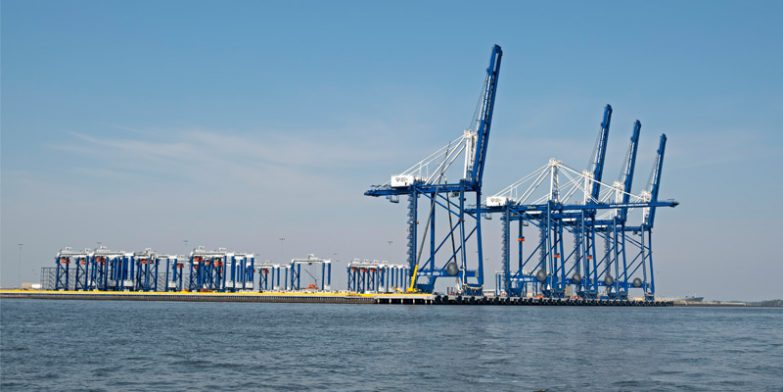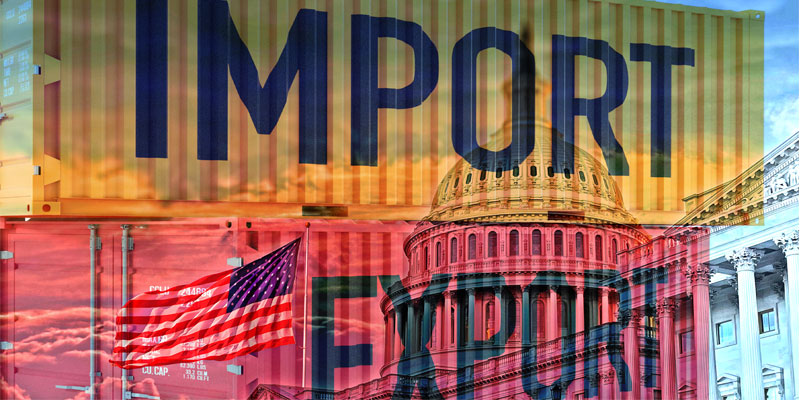
Ongoing geopolitical tensions, shifting alliances, and major policy decisions—particularly from the United States—have cast uncertainty over global trade flows. Despite a modest rise in global output in March, the fragility of business confidence indicates that momentum may be short-lived.
With global GDP forecasts at their weakest since 2009, trade volumes remain highly sensitive to external shocks. The freight industry is watching closely as new tariffs, alliance realignments, and capacity shifts disrupt established patterns. In this climate, supply chain visibility, agility and informed planning are more vital than ever for shippers.
Ocean Freight
The ocean freight sector is navigating a rapidly evolving landscape shaped by capacity surges, alliance restructuring, and geopolitical disruptions. Post-Chinese New Year (CNY) volumes on Asia-Europe routes expanded sharply, up 27% year-on-year, creating pressure on rates and prompting carriers to respond with General Rate Increases (GRIs) and blank sailings.
The rollout of the Gemini and Premier alliances is underway, and while early signs show improved schedule reliability, their full impact won’t be realised until mid-year. Meanwhile, Red Sea diversions continue to absorb 10–12% of global capacity, keeping pressure on east-west services. In the transpacific arena, carriers are adjusting services and blanking sailings as new U.S. tariffs on Chinese goods threaten to dampen demand.
Spot rates remain volatile: while the Drewry World Container Index (WCI) rose 2% in April, it’s still far below pandemic-era highs. Asia–U.S. rates briefly climbed 10%, whereas pressure on them has grown since, while Europe-bound prices remain mixed.
From 7 April to 12 May, there were almost no blank sailings on Asia–North America East Coast services. However, a major spike appeared for the week starting 5 May. By 8 April, 35% of the planned capacity for the week of 5 May had been blanked, rising sharply to 42% by 15 April — a week-on-week increase of 7 percentage points.
On Asia–North America West Coast services, the escalation began earlier. For the week starting 28 April, 13% of capacity had been blanked by 8 April, more than doubling to 28% by 15 April.
With over 80 transpacific sailings blanked in April and the 9 July tariff deadline approaching, rate volatility is expected to persist. Meanwhile, capacity to Europe remains relatively stable, but spot rate stability will hinge on demand holding up into the peak season.
Air Freight
Air freight markets continue to show a sharp divergence between regional lanes, with Asia–Europe flows outperforming and transpacific trade facing increasing turbulence. In April, worldwide air cargo tonnage rose by +6% year-on-year (YoY), underpinned by a +10% YoY increase from Asia Pacific, as US importers advanced shipments ahead of upcoming changes to China–US trade rules. This brought cumulative global tonnage for the first four months of 2025 to +3% YoY.
All major origin regions recorded YoY growth in April, except the Middle East & South Asia (MESA), which remained flat. Rates remained broadly stable, with the global average holding steady. However, average spot rates from China and Hong Kong softened, reflecting the tail end of pre-de minimis front-loading activity, while rates from Asia to Europe remained firm.
The Baltic Airfreight Index recorded a 2% YoY increase in March, with Asia–Europe spot prices up 13%. Airlines are reporting dynamic load factors above 90% on some Europe-bound corridors, prompting concerns over capacity constraints. Summer schedule adjustments are expected to relieve pressure on these lanes, although uncertainty surrounding global trade policies is likely to keep forecasts cautious.
Meanwhile, volumes from China and Hong Kong to the US declined for four straight weeks, now sitting 16% below 2024 levels. Some Southeast Asian origins, including Vietnam, Taiwan, and Thailand, have posted modest gains, but not enough to offset the wider transpacific weakness. Air freight rates from Asia to the US have fallen by 8%, with sharper drops from certain markets such as Vietnam, down 28%.
The removal of De Minimis exemptions on 2 May is expected to reshape eCommerce-heavy lanes into the US, triggering a short-term dip in demand from China and potential freighter redeployments. Carriers are responding cautiously—adding capacity in some areas while keeping flexibility to manage volatility.
Road Freight
The UK and European road freight markets displayed steady performance in March, supported by improved vehicle availability and stable consumer demand. A late Easter postponed the seasonal pricing surge, providing freight buyers with a short window of opportunity to secure capacity at favourable rates.
The TEG Road Transport Index rose to 119.9 in March, with haulage demand climbing 37% month-on-month. Articulated truck availability also grew by 31% year-on-year, suggesting that carriers have ramped up operations ahead of the spring peak. Despite modest fuel price declines, rising labour costs continue to place upward pressure on the cost base.
Looking ahead, volumes are expected to rise into April and May, particularly from retail and food distribution sectors and shippers are advised to act early to lock in capacity and hedge against potential rate spikes driven by warming weather and upcoming public holidays.
Our dedicated commercial vehicle fleet and secured price and capacity agreements with trusted air and ocean carriers ensure your cargo moves efficiently and cost-effectively, even in the toughest conditions.
With advanced purchase order management and real-time, data-verified tracking, you gain complete visibility and control over your shipments, so you can overcome challenges with confidence.
Discover how our technology and tailored freight solutions enhance efficiency, mitigate risks, and optimise your global supply chain.
EMAIL Adam Davies, Global Forwarding Ltd. Vice President.





